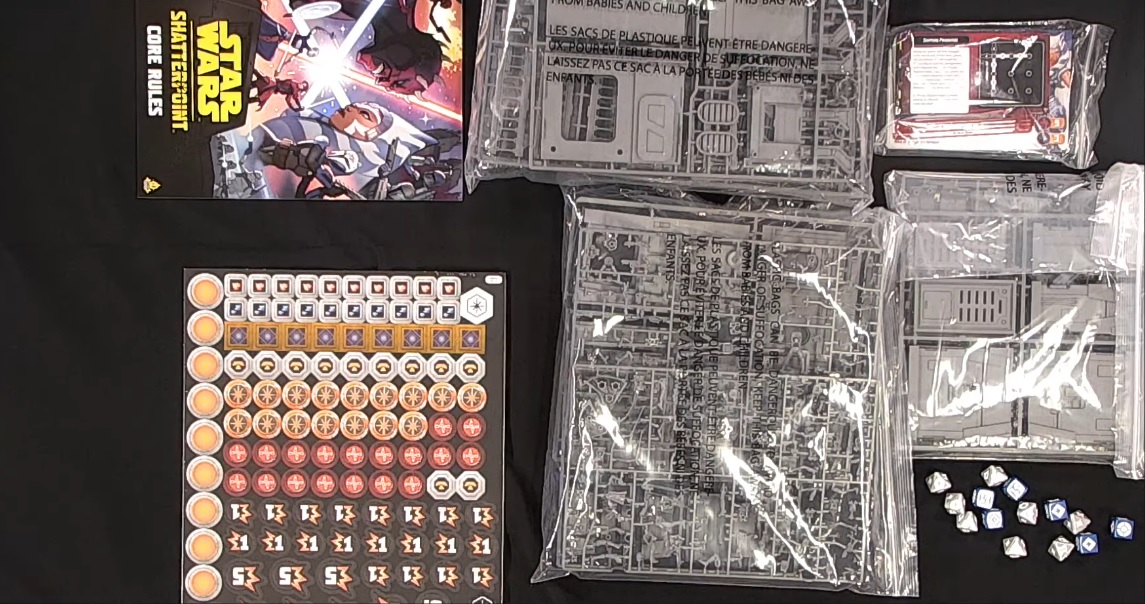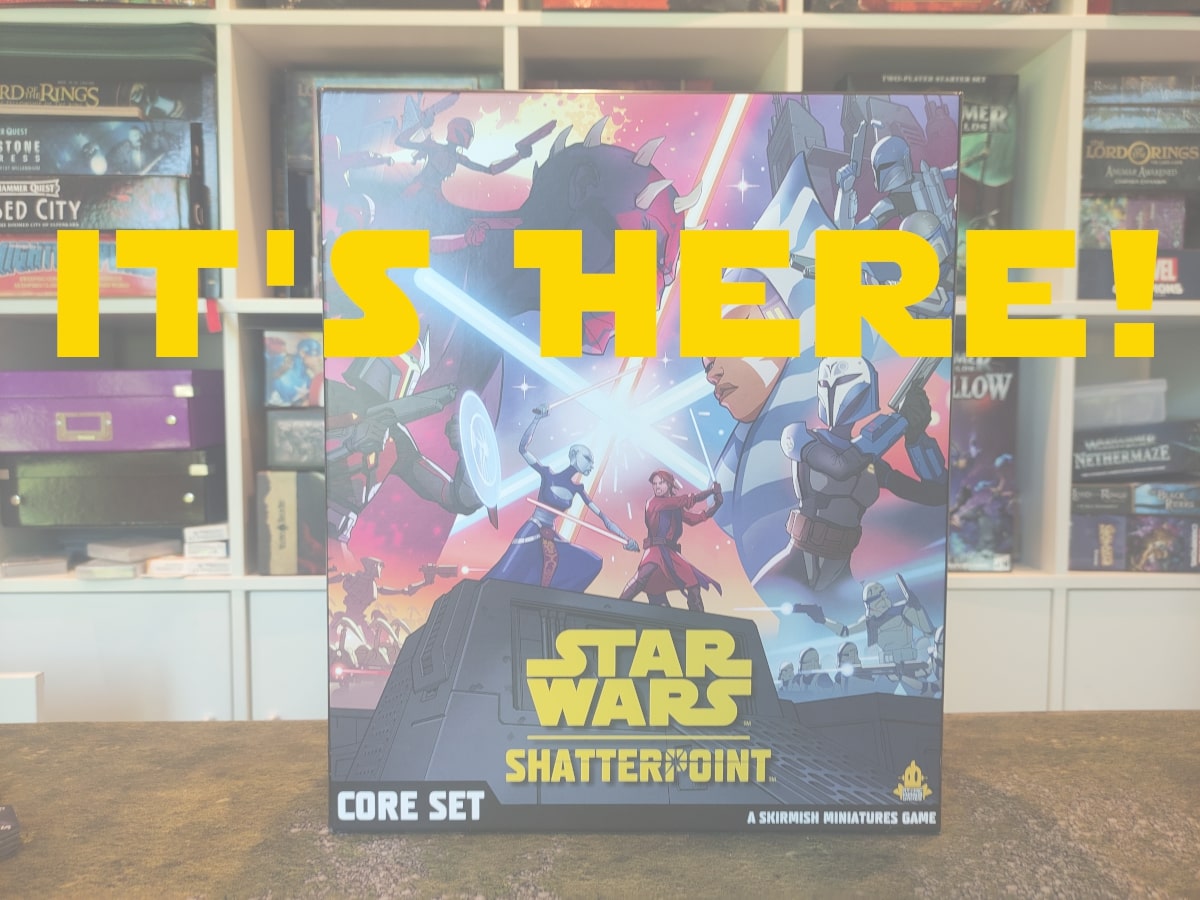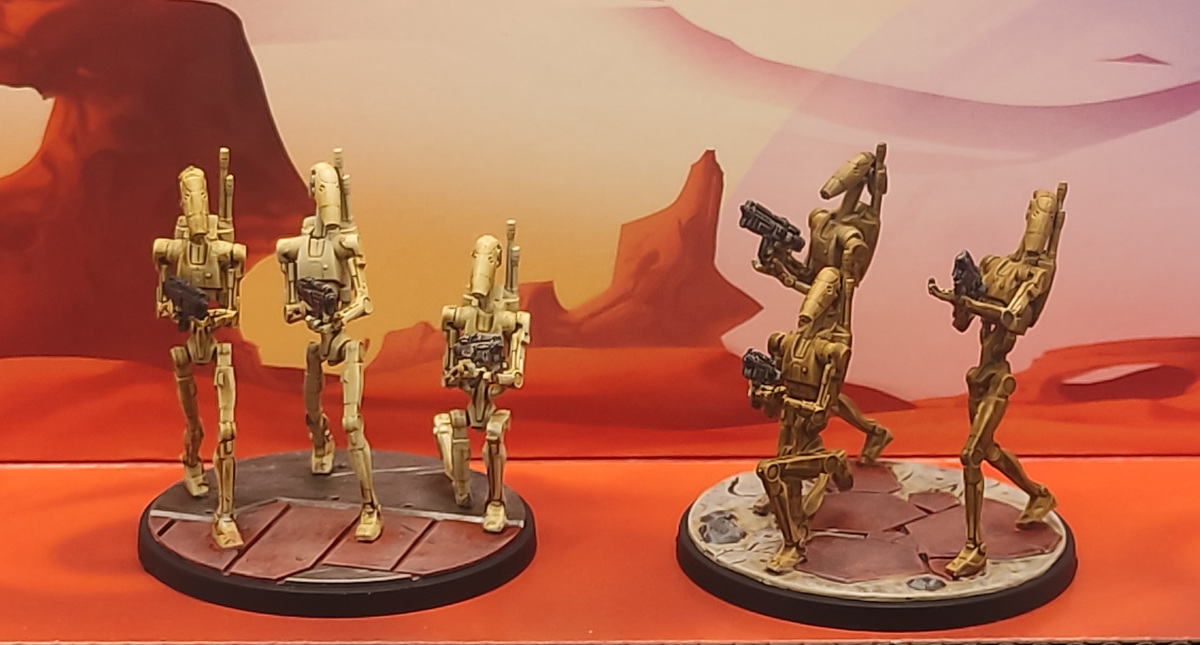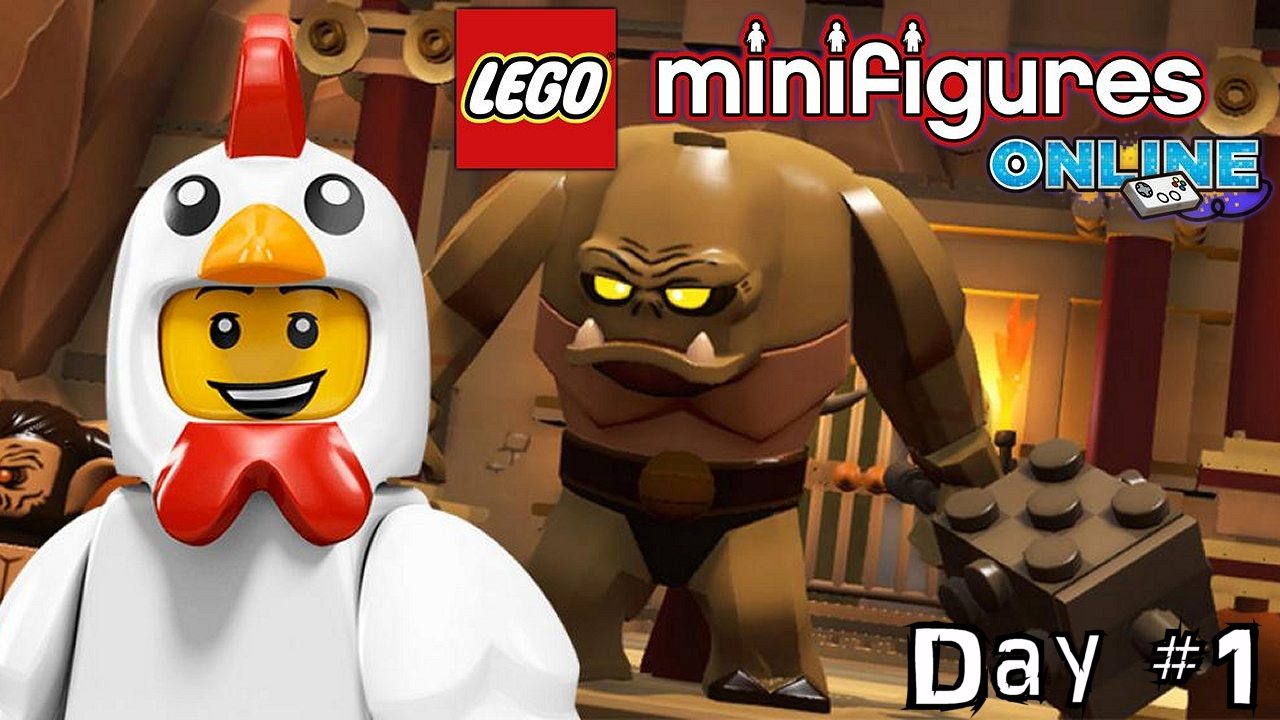Star Wars: Shatterpoint is finally, here, and it’s massive! Not only is the box massive, but as a gaming release, it’s huge too. Miniatures and content are coming thick and fast for the game, and for busy GeekParents it’s perhaps all a little overwhelming. I got hold of a box on release day (June 2nd), and at the time of writing, I’ve only had a chance to play two games
I have put the models together and have a few thoughts about the experience that I’d like to share with GeekDad readers. Often for games on GeekDad, we write 3,000+ word mega-posts, that tell you everything you need to know about the game. If I do that, you’ll quite probably end up reading it somewhere around Christmas.
This is a premium product with a premium price tag. If you buy into Shatterpoint, you’ll want to take your time to savor the game in all its glory. Like many tabletop miniatures games, the game is going to evolve well beyond what you get in the core box. I’m aiming to write a series of posts that detail my experiences of the game, and its models and chart the passage of that evolution.
The aim of this series is to help busy parents and casual gamers decide whether Shatterpoint is something they want to be involved with. For the hardcore fans on top of everything, there are countless podcasts, videos, and blog posts about rules interactions, and the competitive meta. I’m asking you to join me on a more casual slow-boat journey to a galaxy far far away…

What’s in the Star Wars: Shatterpoint Box?
You get everything you need to play a full game of Shatterpoint, making it a more complete package than AMG’s other release Marvel: Crisis Protocol.
In a game of Shatterpoint players field 2 strike teams that each consist of a squad of 3 or four models. A squad is made up of three types of unit, primary, secondary, and support. These are broken down in the box like this.
Primary Units:
- Anakin Skywalker.
- Ahsoka Tano (In “end of Clone Wars era” mode – “Jedi No More.”)
- Lord Maul (Not Darth Maul!).
- Asajj Ventress.
Secondary Units:
- Gar Saxon.
- Bo Katan Kryse.
- Captain Rex.
- Kalani – Tactical Droid.
Support Units:
- Clan Kryse Mandos.
- Clan Saxon Mandos.
- Clone Troopers.
- Separatist Droids.
As well as all that, you’ll also find:
- Several pieces of terrain. Enough to play the game, though you’ll probably find you want to add some more.
- The range rulers you need to play the game.
- One set of attack dice and one set of defense dice.
- Lots of tokens for tracking wounds and the various in-game effects that occur.
- All the stat cards you need for the models included in the box.
- The mission cards for the core box mission.
- Rulebook
It’s worth mentioning that if you’re going to play the game a lot, you may wish to purchase additional sets of dice and rulers, just so each player can have their own, but these aren’t necessary for day one.
One of the best things in the Shatterpoint Box is the scenic backgrounds for you to take pictures against. Such a simple addition, which gave me an unexpected feeling of well-being!
The recommended retail price for the game is $165, but you’ll almost certainly find it cheaper if you shop around!

What’s not in the Box?
Instructions for building your models!
Not including instructions is a curious decision for a core box. Especially for a game that, thanks to its setting, is likely to attract people in for their first taste of tabletop miniatures gaming.
It’s only because I already knew that the build instructions for all of the Shatterpoint models are available on their website, that I knew that’s where I had to go. There is nothing in the box that tells you this. There is a QR code on the back of the box that will take you to the instructions, but unfortunately, it isn’t clear that this is where it goes. The box just says something like “follow link for more information.”
It’s a complete mystery to me why there isn’t a piece of paper in the box, or the first page of the rulebook with a very clear exhortation as to how to find the build instructions. It’s all too easy to see an excited family ready to commence their Shatterpoint journey only to get extremely disillusioned as they try to put their models together guide-free.
Not the Droids We Were Looking for.
The instructions, when you finally find them, are pretty good. Make sure you pay attention to the terrain instructions and stick the pieces on the right way around. It won’t completely break your kit if you get it wrong, but it will make your life tricky.
There are some quite small pieces that need removing from the sprue and then sticking, but most of the models are easy to put together if you take your time and pay attention to the instructions.
The B1 Battle Droids (and to a lesser extent Kalani) are a different thing altogether. These, I found difficult to assemble, and looking at the forums, I know I wasn’t the only one. My only advice is to get some good sprue clippers, and some quality polystyrene cement to stick them together and take your time.
The connections on the models are actually pretty good, and go together, mostly in only one way. You’ll find the job much easier if you wait for each section to dry before you try the next. Stick the legs on, wait for it to set, and then add the arms (or vice versa). It’s much easier doing it that way than trying to hold four squirming limbs all out once, whilst covering yourself in glue. When using polystyrene cement, try not to get it on your fingers or on parts of the miniature that don’t need it. It will start to partially dissolve the plastic, and you’ll end up with sticky fingerprints on your model.
Having said all that, the builds are strong in this box and before long you’ll be the proud owner of a host of your favorite Star Wars characters and some scenery upon which to battle.
Up-to-Date Rules.
Another thing about miniatures games like Shatterpoint is that, unlike most of the boardgames that we review on GeekDad, Shatterpoint’s rulebook is continually evolving. It’s a living document that AMG might update at any time. This means that the printed rulebook included in the box is out of date before you even open it. The changes made aren’t huge. The game out of the box still works just fine, they’ve just made a few small changes, particularly around how cover works.
You can find the most up-to-date rules, here. Also on that page, you can find FAQs and errata, which helpfully include a changelog so you can see which bits of the rules have been updated.
Playing Some Games!
Since starting writing this piece, I have now played a couple of short games and I definitely have some thoughts on how everything hangs together.
One of the things I love about Star Wars: Shatterpoint is how easy it is to build strike teams. Sure, you can pore obsessively over the stat cards and work out brilliant tactical synergies, but alternatively, you can just take the characters you like, within a simple framework, and play a game. The minimum effort required to bring a strike to the table is very low, which is great for casual and time-pressed gamers.
I love the order mechanic. This uses a deck of cards, made up of a card for each of your units in the strike team. On each of your turns, you draw the top card of the deck and that’s the unit you have to activate. (There is a bit of mitigation via a “reserve” mechanic, but I’ll talk about that in my next post.) When I play skirmish games, and in particular Marve: Crisis Protocol, I can fall into a decision spiral, where I try to work out all the best permutations before I make my move. The analysis paralysis is real! Here, all that is more or less removed. Who you’re going to activate is chosen for you. You have to decide what to do with them, of course, but at least there is never any regret that you activated the wrong fighter.
The game is NOT about killing your opponent’s fighters. Completely removing a unit from the tabletop is tricky. If you focus on doing so, you’ll almost certainly lose. To win games of Shatterpoint you have to focus on objective control. Winning the game is about how to get the most action economy out of your fighters and trying to slow your opponent’s units down. It’s a fascinating tactical struggle.

There are a lot of conditions and a bewildering array of icons. This takes a little time to get used to, especially as some of the symbols look very similar. There will be lots of referring to the rulebook in your first games. To avoid too much token clutter on fighter cards I purchased some wheel counters so that we didn’t have to use the wound tokens. These aren’t essential but they make the bookkeeping a little easier and if you’re a messy game like me, stop you from forgetting which tokens belonged on which cards.
Watch your wording! “Damage,” “wounded,” and “injured” all mean different things in different tabletop games, and all are used in Shatterpoint to denote very specific things. Many powerful actions trigger off of fighters being “Wounded” which is different to “damage” in game terms, but this can be hard to remember in the heat of battle. Similarly, a Move action allows you to Advance, Dash, or Climb. Other effects in the game will also let you advance, dash, or climb, but they don’t count as move actions, so don’t trigger effects that require a move action. To make matters more confusing some abilities trigger off advances, dashes, or climbs alone and therefore would be triggered in either case above!
Whilst you are only controlling 8 models in a game of Shatterpoint, there is still a lot to think about. I would definitely recommend playing a smaller mission with only a single-strike team for your first game out. Especially if you are new to tabletop gaming. I will go through how we broke ourselves into the game in a later post.
The Future!
I’m very excited about the prospects of Shatterpoint. A low model count game in the Star Wars universe is everything I’ve been looking for. In my early games, I have been impressed by the game’s mechanics. There is lots of innovation to be found, that allow for meaningful decisions on the battlefield whilst making the tabletop experience feel cinematic. It really felt like I was involved in an episode of The Clone Wars.
There are many models being released in the coming months, arguably too many for us slow boaters. Nevertheless, I’ll be chugging along picking them up as and when I can. With characters such as Cad Bane, Darth Vader, and Luminara Unduli coming to Shatterpoint soon, there’s an awful lot to be excited about!
Hopefully, this will be the first of many posts about Shatterpoint on GeekDad, moving forward I’m hoping to play more and more games and paint more and more of its wonderful minis. You can also track my progress on my Shatterpoint blog Hellothereshatterpoint.blog, although admittedly time to write in two places is hard to find. Especially as I’m also making Shatterpoint content over at Agents of Sigmar. I hope you found this post useful and I look forward to seeing you next time on my slowboat journey into the Shatterpoint universe.
Click here to see all our tabletop game reviews.
![]() To subscribe to GeekDad’s tabletop gaming coverage, please copy this link and add it to your RSS reader.
To subscribe to GeekDad’s tabletop gaming coverage, please copy this link and add it to your RSS reader.
Disclosure: GeekDad received a copy of this game for review purposes.






